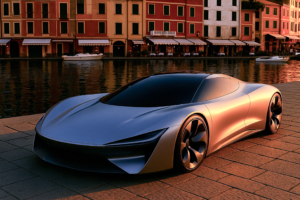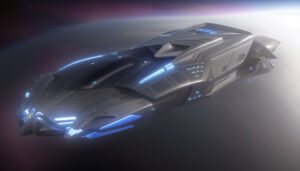Managing a Car Design Team Effectively: Strategies for Success


Managing a car design team is a multifaceted challenge that requires a blend of leadership, creativity, and technical expertise. The automotive industry is dynamic and competitive, demanding innovative and aesthetically pleasing designs that also meet rigorous functional and safety standards. In this article, we will explore key strategies and best practices for effectively managing a car design team, ensuring successful collaboration, creativity, and ultimately, the development of outstanding vehicles.
- Establish a Clear Vision and Goals:Before diving into the design process, it is crucial to establish a clear vision for the project. Clearly define the goals, objectives, and expectations for the car design team. This involves understanding the market, target audience, and design preferences. A well-defined vision provides a roadmap for the team, fostering a sense of purpose and direction.
- Build a Diverse and Collaborative Team:A successful car design team comprises individuals with diverse skills, backgrounds, and perspectives. Encourage collaboration by fostering an inclusive and open work environment where team members feel comfortable sharing ideas. A diverse team brings a range of experiences and insights, contributing to a richer design process.
- Effective Communication is Key:Communication is the backbone of any successful team. Establish clear lines of communication within the design team and across other departments such as engineering, marketing, and manufacturing. Regular team meetings, project updates, and feedback sessions are essential for maintaining transparency and ensuring everyone is on the same page.
- Utilize Project Management Tools:Implementing project management tools is crucial for organizing tasks, tracking progress, and meeting deadlines. Tools like Asana, Trello, or Jira can help streamline workflows, assign tasks, and facilitate communication. A well-organized project management system enhances efficiency and ensures that everyone is aware of their responsibilities.
- Encourage a Creative Culture:Foster a creative culture that encourages risk-taking and out-of-the-box thinking. Designers should feel empowered to explore unconventional ideas without fear of criticism. Regular brainstorming sessions, design thinking workshops, and exposure to external sources of inspiration can stimulate creativity within the team.
- Balance Creativity with Practicality:While creativity is crucial, it must be balanced with practical considerations. Designers should be mindful of manufacturing constraints, cost implications, and regulatory requirements. Striking the right balance between artistic vision and practicality ensures that the final design is not only aesthetically pleasing but also feasible for production.
- Provide Professional Development Opportunities:Invest in the professional development of your design team. Provide access to training programs, workshops, and industry events. This not only enhances the skill set of individual team members but also keeps the team abreast of the latest trends, technologies, and design methodologies.
- Incorporate User-Centric Design:Prioritize user experience in the design process. Conduct user research and gather feedback to understand the preferences and needs of the target audience. Integrating user-centric design principles ensures that the final product resonates with consumers and meets their expectations.
- Embrace Technology and Innovation:Stay at the forefront of technological advancements in design tools and software. Implementing cutting-edge technologies such as virtual reality (VR) for design visualization or artificial intelligence (AI) for design optimization can elevate the capabilities of the design team and enhance the overall design process.
- Adaptability and Flexibility:The automotive industry is constantly evolving, with new trends, technologies, and market demands emerging regularly. A successful design team must be adaptable and flexible, ready to pivot in response to changing circumstances. This requires a proactive approach to staying informed about industry developments and being prepared to adjust design strategies accordingly.
- Effective Leadership and Empowerment:Leadership plays a pivotal role in managing a car design team effectively. A good leader provides guidance, support, and motivation to the team. Empower team members to take ownership of their work, fostering a sense of responsibility and accountability. A well-led team is more likely to overcome challenges and deliver exceptional results.
- Celebrate Achievements and Learn from Setbacks:Recognize and celebrate both individual and team achievements. Positive reinforcement boosts morale and encourages continued dedication to the design process. Similarly, setbacks should be viewed as opportunities for learning and improvement. Conduct post-project reviews to analyze what worked well and identify areas for enhancement.

Managing a car design team is a challenging but rewarding job. It requires a combination of technical expertise, leadership skills, and business acumen. To be successful, car design managers must be able to motivate and inspire their team members, create a positive work environment, and deliver high-quality results on time and within budget.
Building a High-Performing Team
The first step to managing a car design team effectively is to build a high-performing team. This means recruiting talented and experienced designers, as well as creating a culture of collaboration and innovation.
Here are some tips for building a high-performing car design team:
- Recruit the best talent. When hiring new team members, look for designers with the skills and experience necessary to meet your team’s needs. Also, consider personal qualities such as creativity, problem-solving skills, and teamwork.
- Create a positive work environment. Foster a workplace culture where team members feel respected and valued. Encourage collaboration and creativity, and provide opportunities for team members to learn and grow.
- Set clear goals and expectations. At the beginning of each project, make sure that all team members understand the goals and expectations for the project. This will help to ensure that everyone is working towards the same objectives.
- Provide regular feedback. Give team members regular feedback on their work, both positive and negative. This will help them to improve their skills and performance.
- Recognize and reward achievements. When team members achieve their goals, be sure to recognize and reward their hard work. This will help to motivate them and keep them engaged.

Managing the Design Process
The car design process is complex and time-consuming. It involves a number of different stages, including sketching, modeling, prototyping, and testing. Car design managers need to be able to effectively manage this process to ensure that projects are completed on time and within budget.
Here are some tips for managing the car design process effectively:
- Break down the design process into smaller steps. This will make it easier to track progress and identify any potential problems early on.
- Set deadlines and milestones for each stage of the design process. This will help to keep the project on track.
- Regularly review the design with stakeholders. This will help to ensure that the design meets their expectations.
- Be flexible and adaptable. Things don’t always go according to plan in the car design process. Be prepared to make adjustments as needed.

Communicating with Stakeholders
Car design managers need to be able to communicate effectively with a variety of stakeholders, including clients, engineers, and marketing professionals. It is important to be able to explain complex design concepts in a clear and concise way.
Here are some tips for communicating effectively with stakeholders:
- Listen to feedback. Be open to feedback from stakeholders and be prepared to make changes to the design based on their input.
- Be clear and concise. Avoid using technical jargon when communicating with stakeholders who are not familiar with the car design process.
- Use visuals to illustrate your points. Visuals can be a very effective way to communicate complex design concepts.
- Be responsive. Respond to stakeholder inquiries promptly and professionally.
Conclusion:
Effectively managing a car design team involves a delicate balance of creativity, communication, and strategic planning. By establishing a clear vision, fostering collaboration, embracing technology, and providing opportunities for professional development, a design team can navigate the complexities of the automotive industry and deliver innovative and successful designs. Continuous improvement, adaptability, and a commitment to excellence are the hallmarks of a truly effective car design team.







